
Putting soul and sole together…
With the kind of attention to detail that only AI can come up with, these shoes are an avant-garde combination of two industries that have very little of an overlap. Envisioned by AI-artist Str4ngeThing, the footwear, which range in a variety of styles, capture architectural and artistic expressions and details from Renaissance Architecture. The results are absolutely stunning, even though impractical. They are, however, “a testament to the power of design and innovation using AI,” according to the designer.
Designer: Str4ngeThing
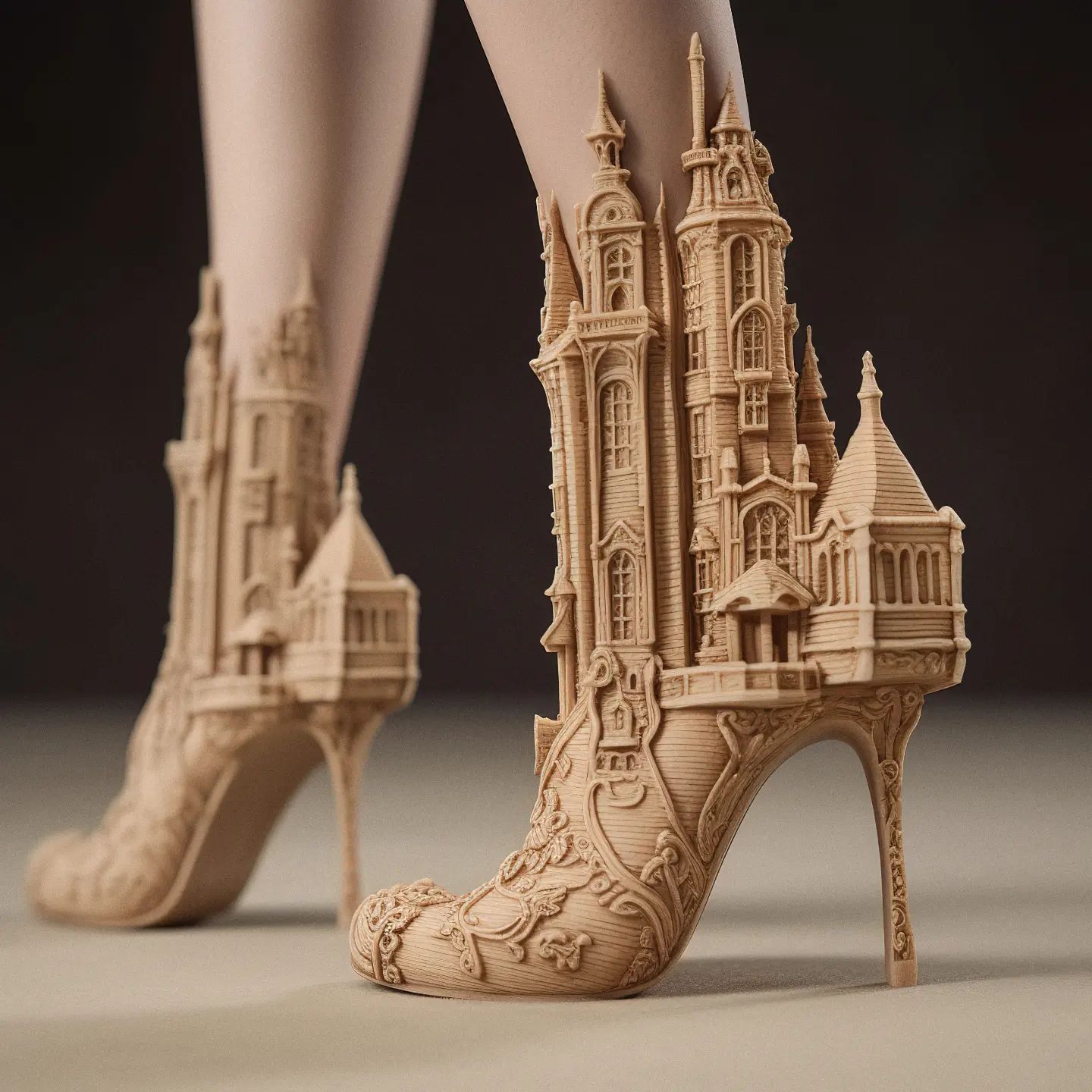
These heels use a combination of floral motifs and traditional Renaissance spires and towers
Looking like it’s made using a combination of thin-sliced wood veneer or cork, these shoes have an immense amount of detail in them. While footwear design usually sticks to a “less is more” agenda, these shoes are the absolute antithesis to the fact. Chuck Taylors are iconic for their simplicity, so are Crocs, and Christian Louboutins… but these Renaissance Footwear concepts aren’t. Every shoe compresses an entire era of iconic architecture into its small ‘footprint’. Sure, the AI loses some crucial details and makes a few assumptions while generating the images, but the results look marvelous no less.
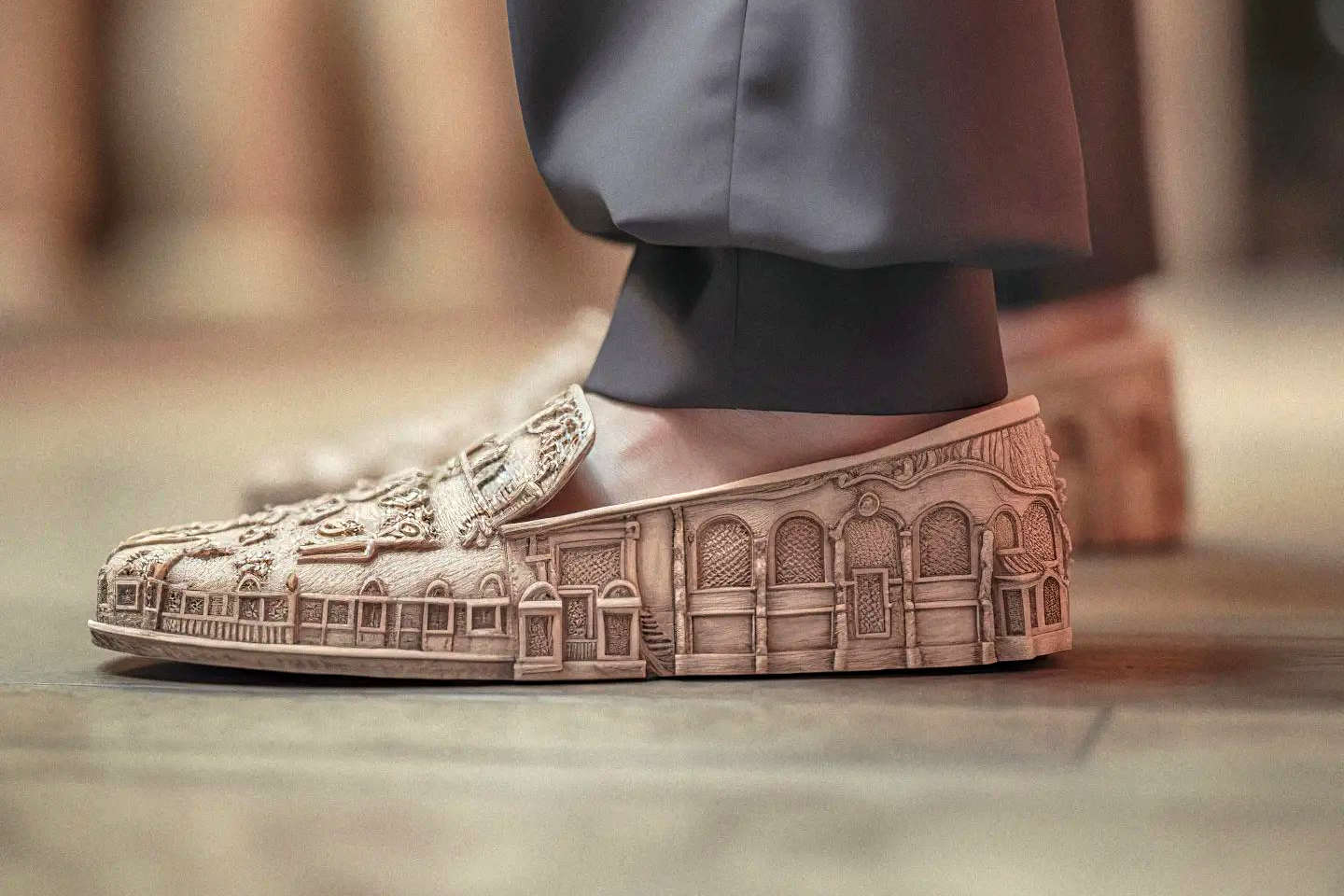
A classic interpretation of the Italian Renaissance, this mocassin features arched windows like the ones seen in Roman architecture

Some shoes go a step further by including sculptural elements in their details like the one above. The tongue of the shoe, right near the shin, looks like a grotesque – a key element of Renaissance and even medieval architecture. The midsole area has some wonderful detailing, while the entire shoe looks like it was carved from sandstone. The shoe concept below is a stunning example of grandiosity, with an entire relief mural ‘carved’ into the side of the stone. The top of the shoe is an interpretation of the highly detailed Corinthian-style orders seen at the top of architectural columns. Is it practical? Absolutely not. Is it awe-striking? Undeniably.
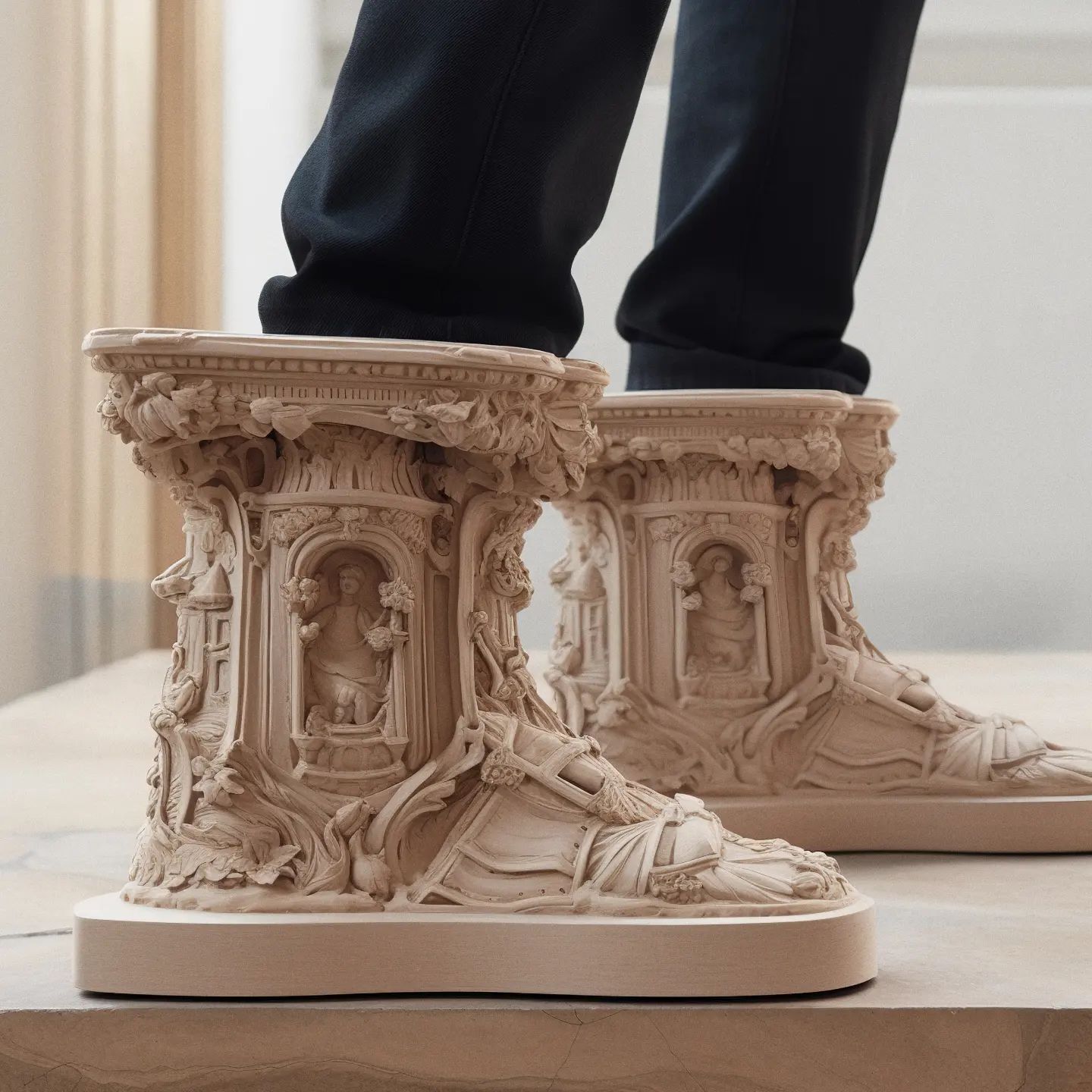
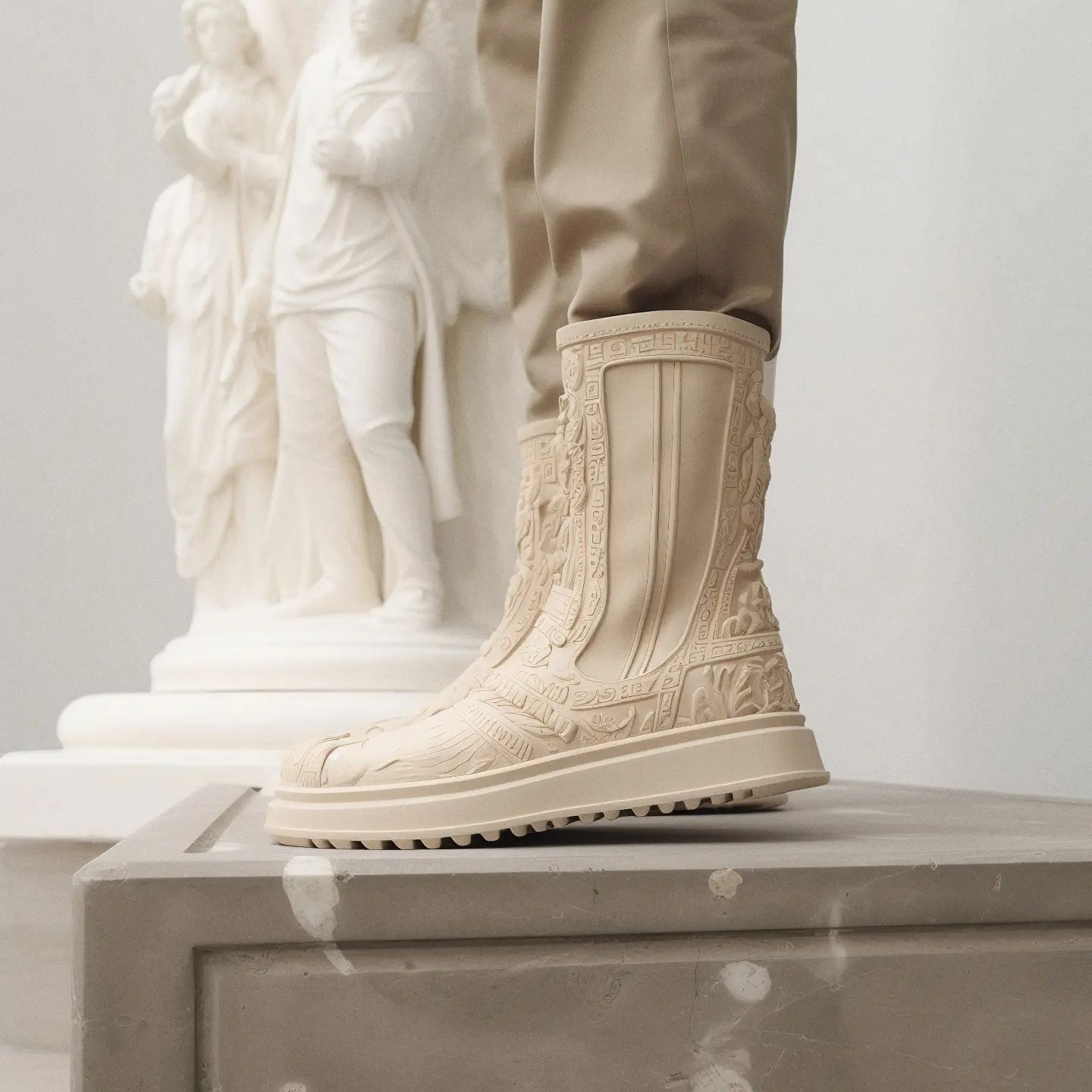
“This collection is also a true testament to the importance of creativity and innovation in the world of fashion. It demonstrates that with a forward-thinking approach and a commitment to excellence, it is possible to create something truly exceptional,” says designer Str4ngeThing.
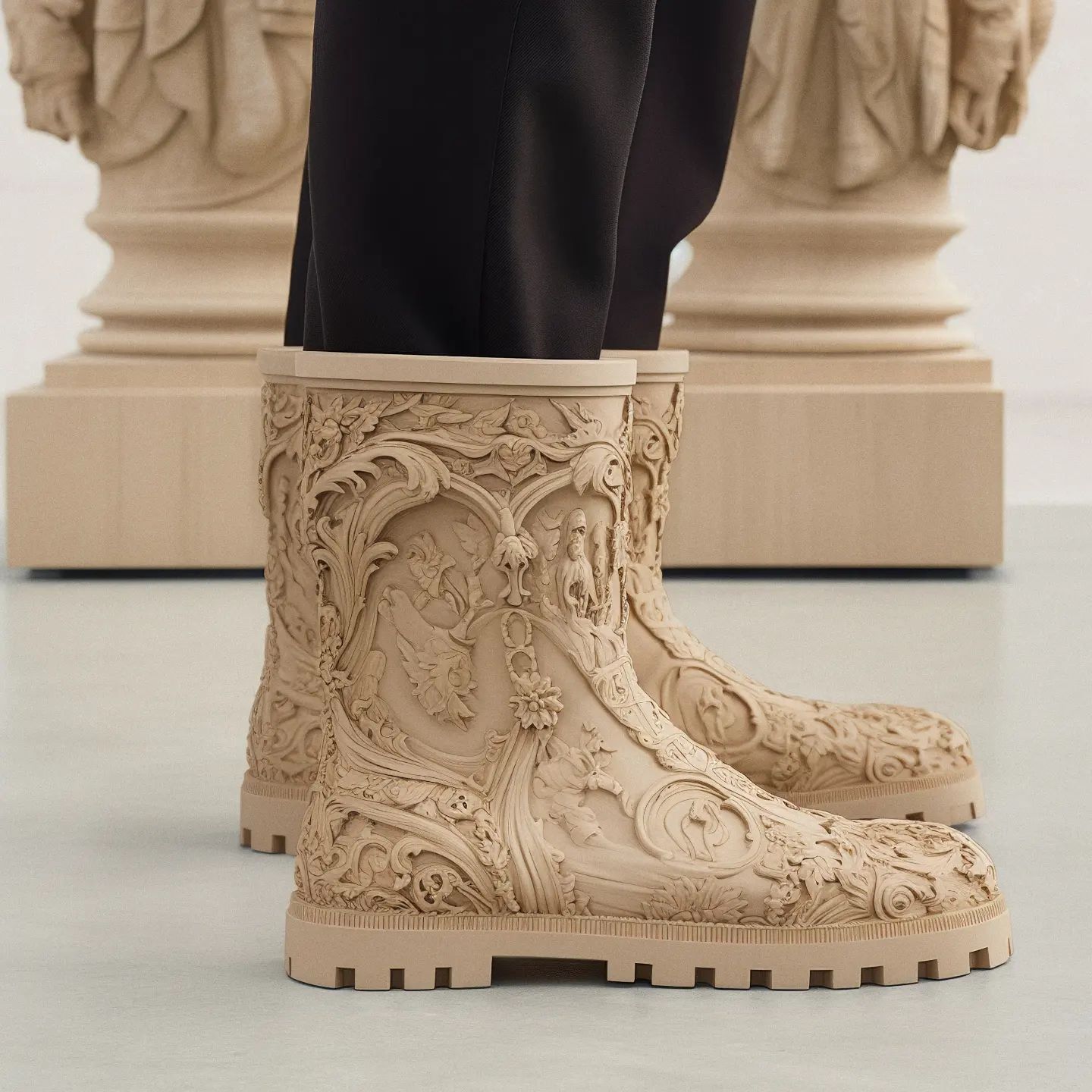
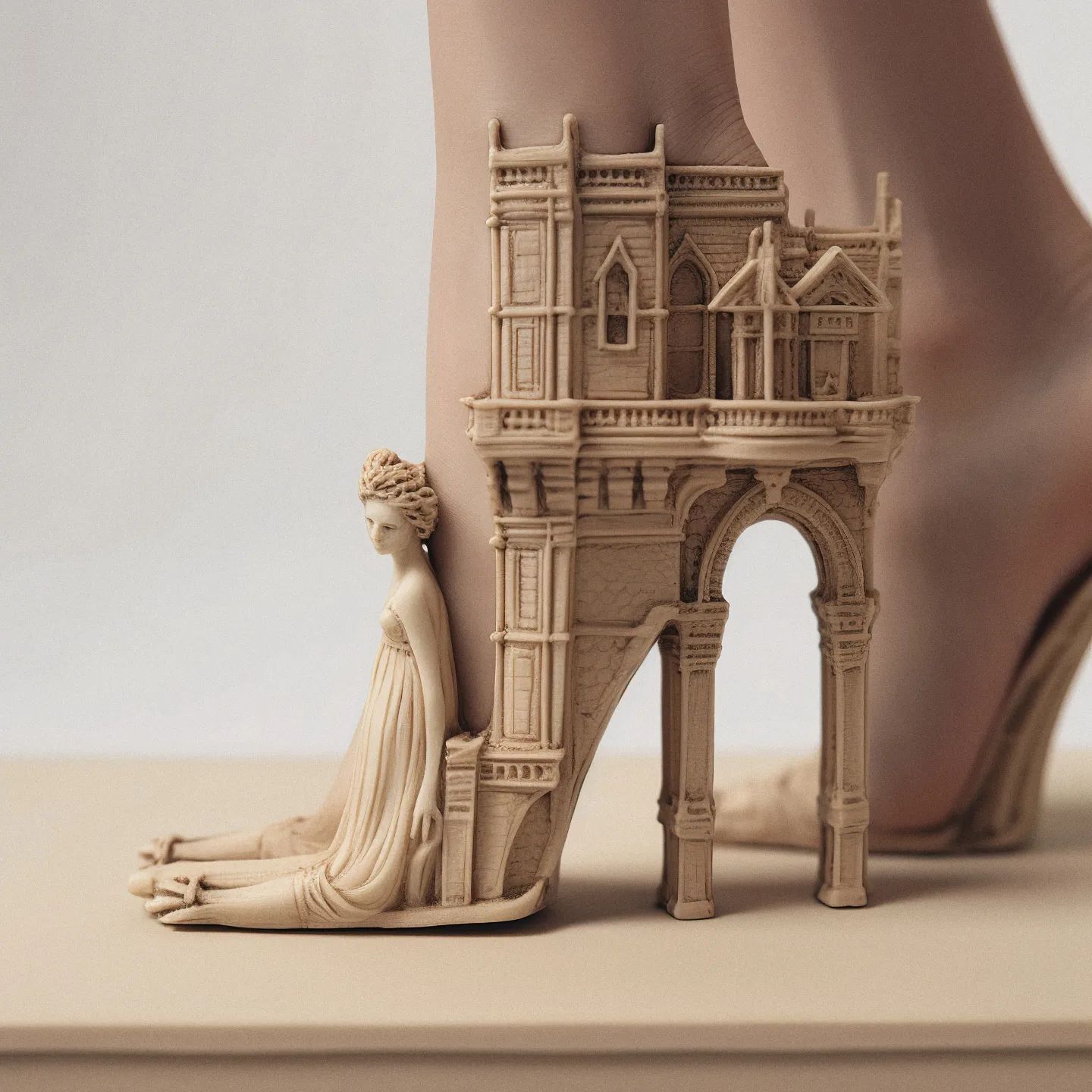
Not all footwear designs get the balance between different aesthetic elements right, though… like the proportions between architecture and human sculpture.
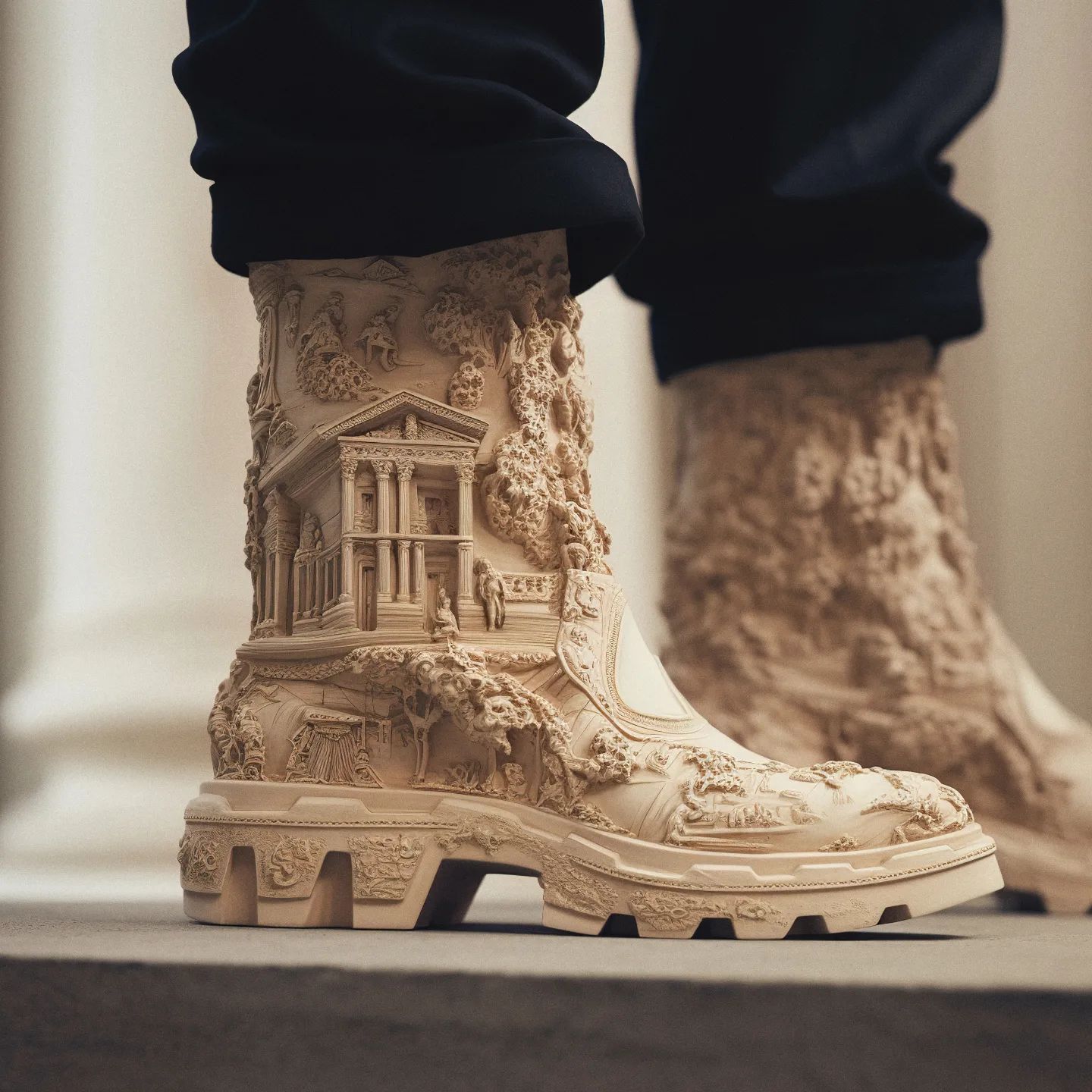
The shoe concept above goes way beyond architecture and builds an entire diorama on the footwear body. Although it isn’t perfect, you can see the Roman columns, the angled roofs of the Pantheon-style building, and the environments around it. The footwear below feels like a fresco brought to life, almost like Michelangelo made the footwear himself.
The AI has a long way to go in making concepts that are feasible, but at least in its current stage, Midjourney’s images are about as stunningly hyperrealistic as they can be. “I’m excited to see how this collection will inspire and influence the world of fashion, and I’m proud to have played a part in bringing it to life,” Str4ngeThing mentions in his Instagram post.
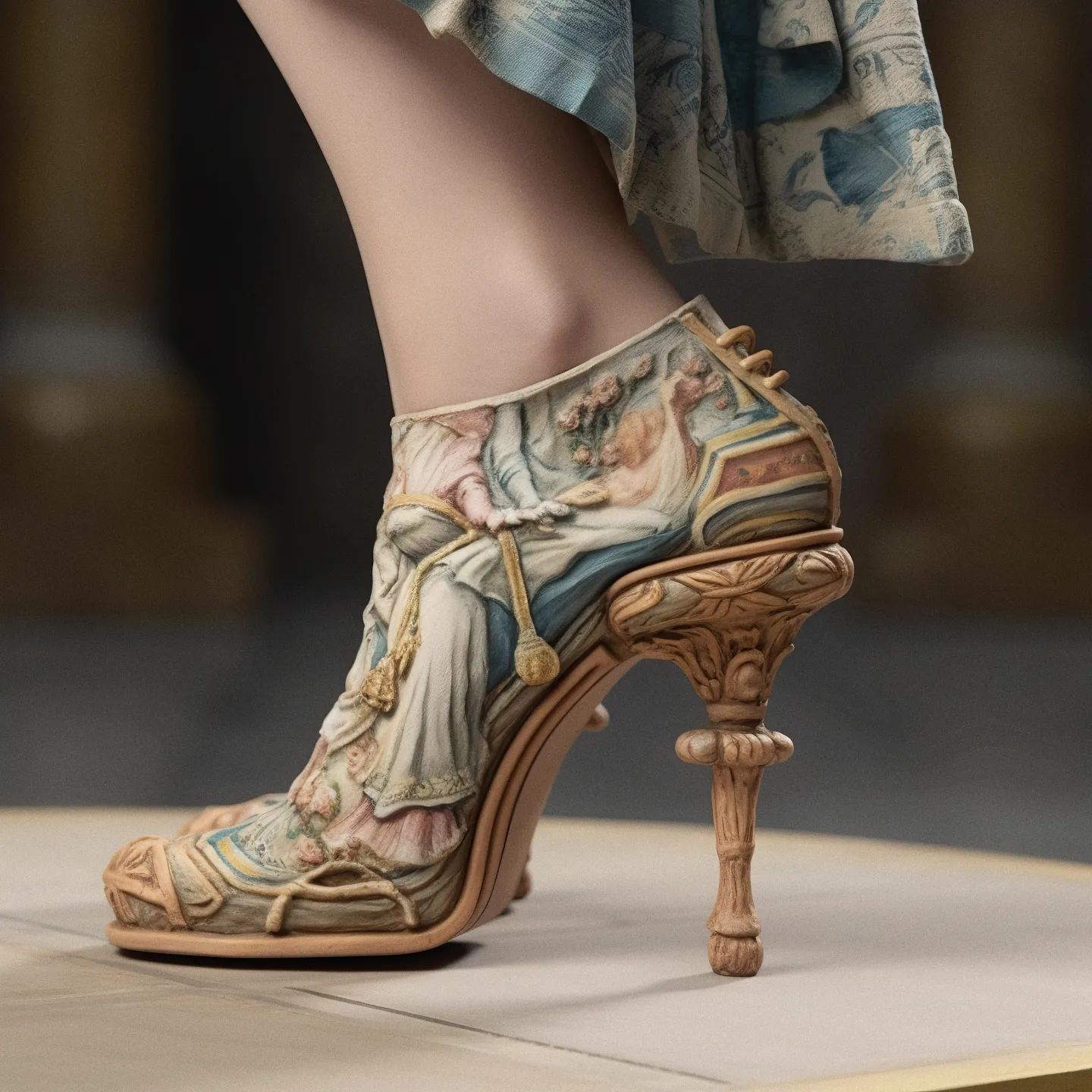
The post AI imagines Renaissance Architecture as Footwear to create absolutely stunning new styles first appeared on Yanko Design.
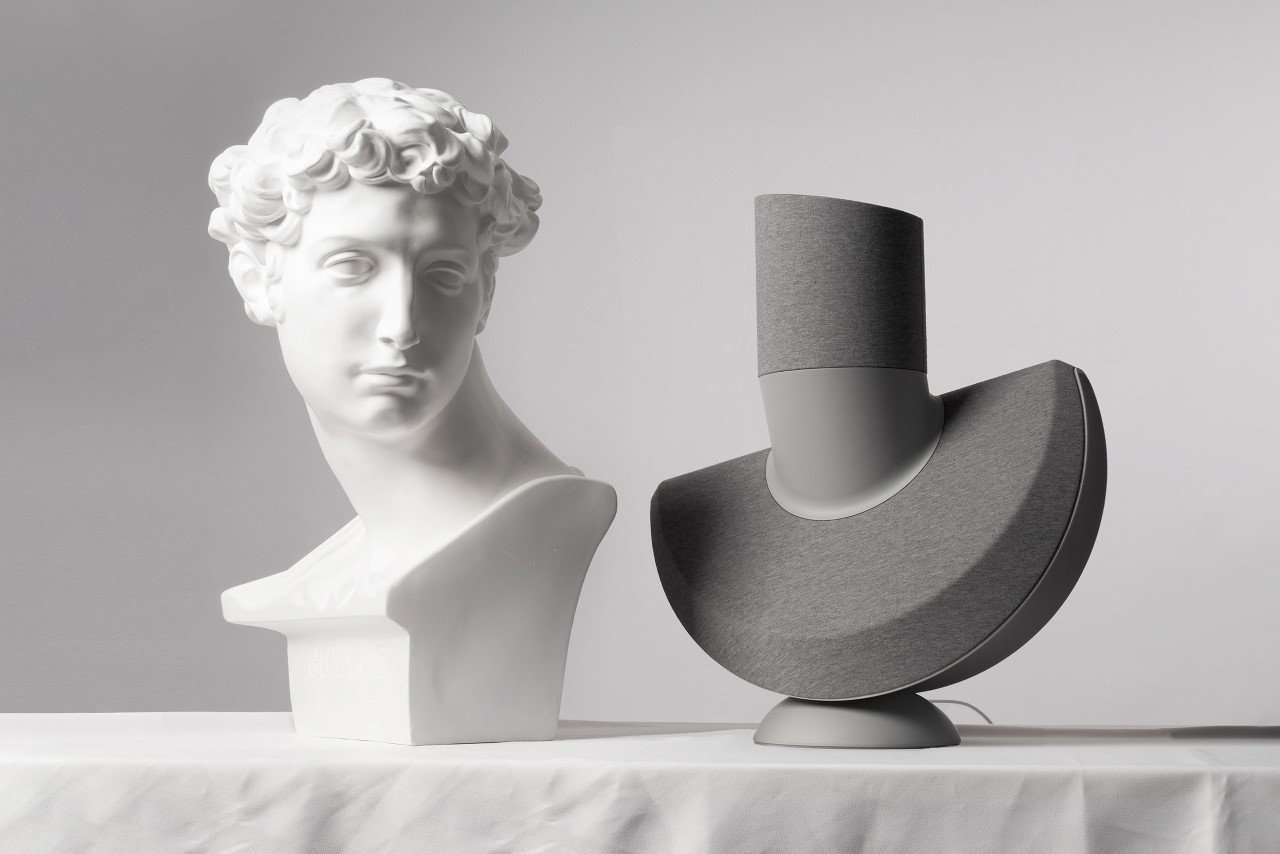
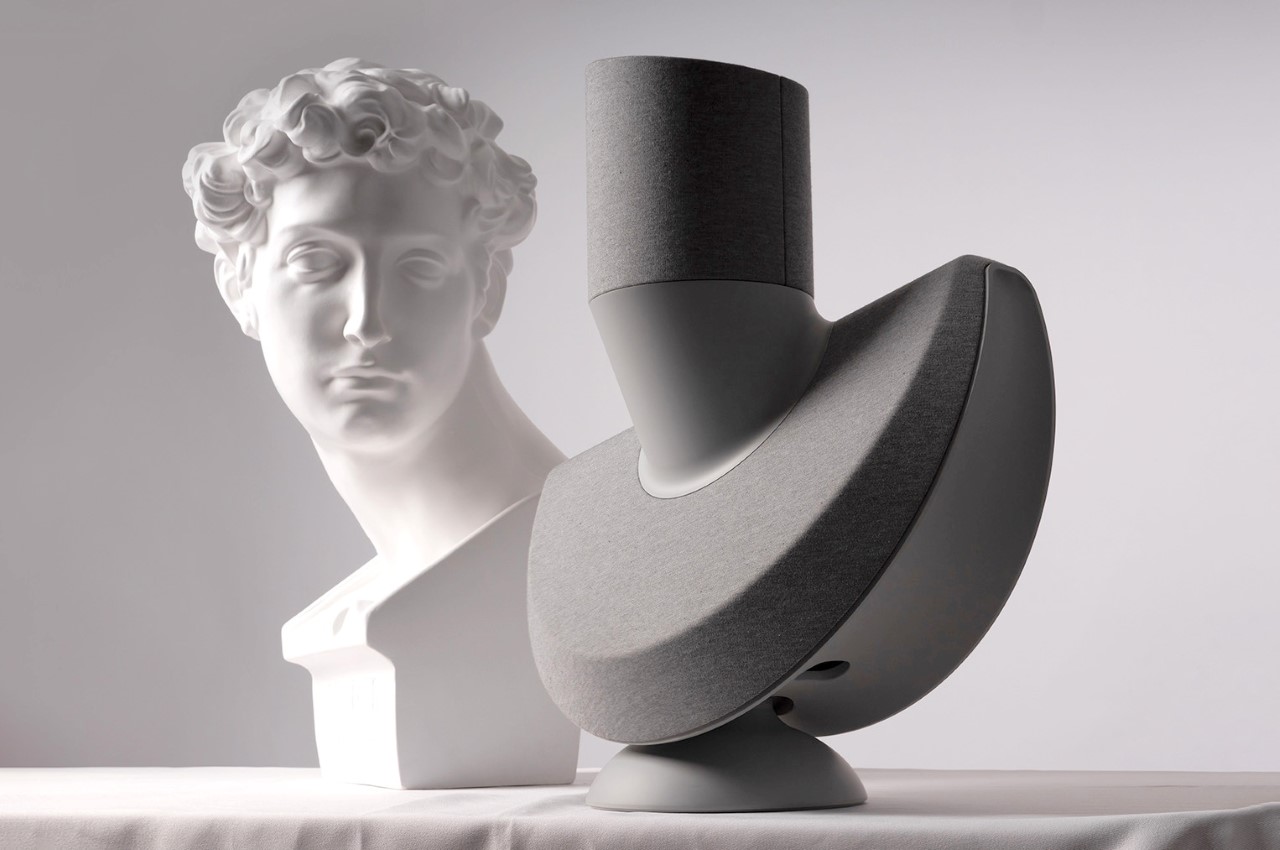
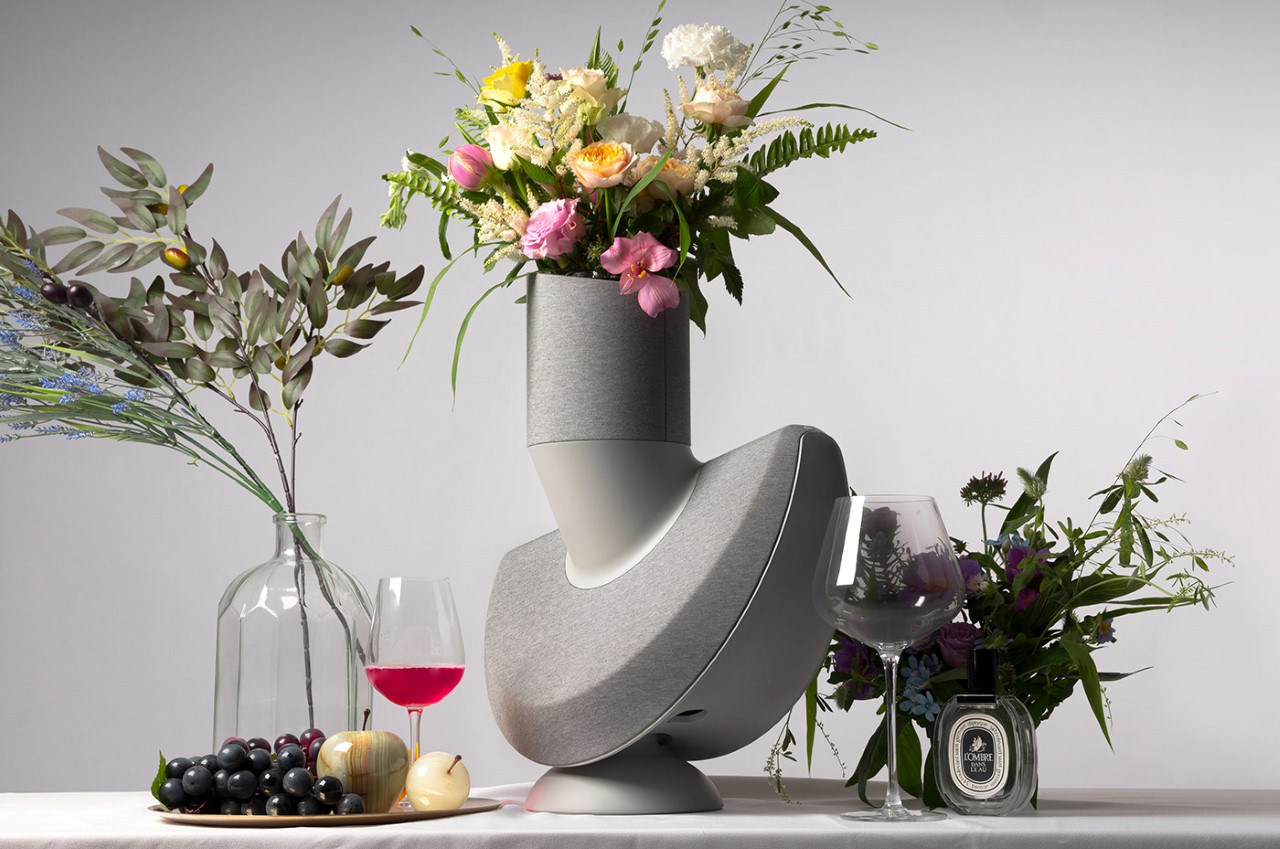
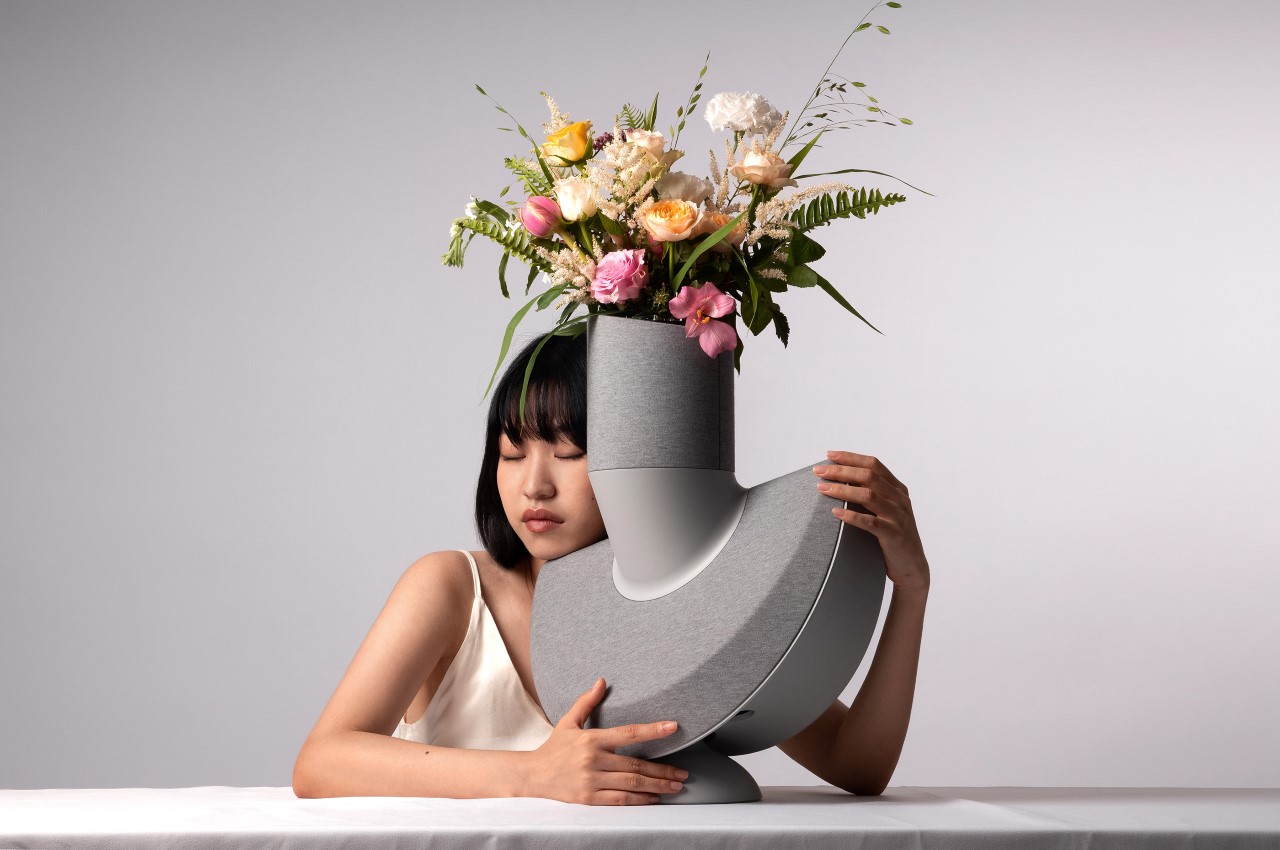
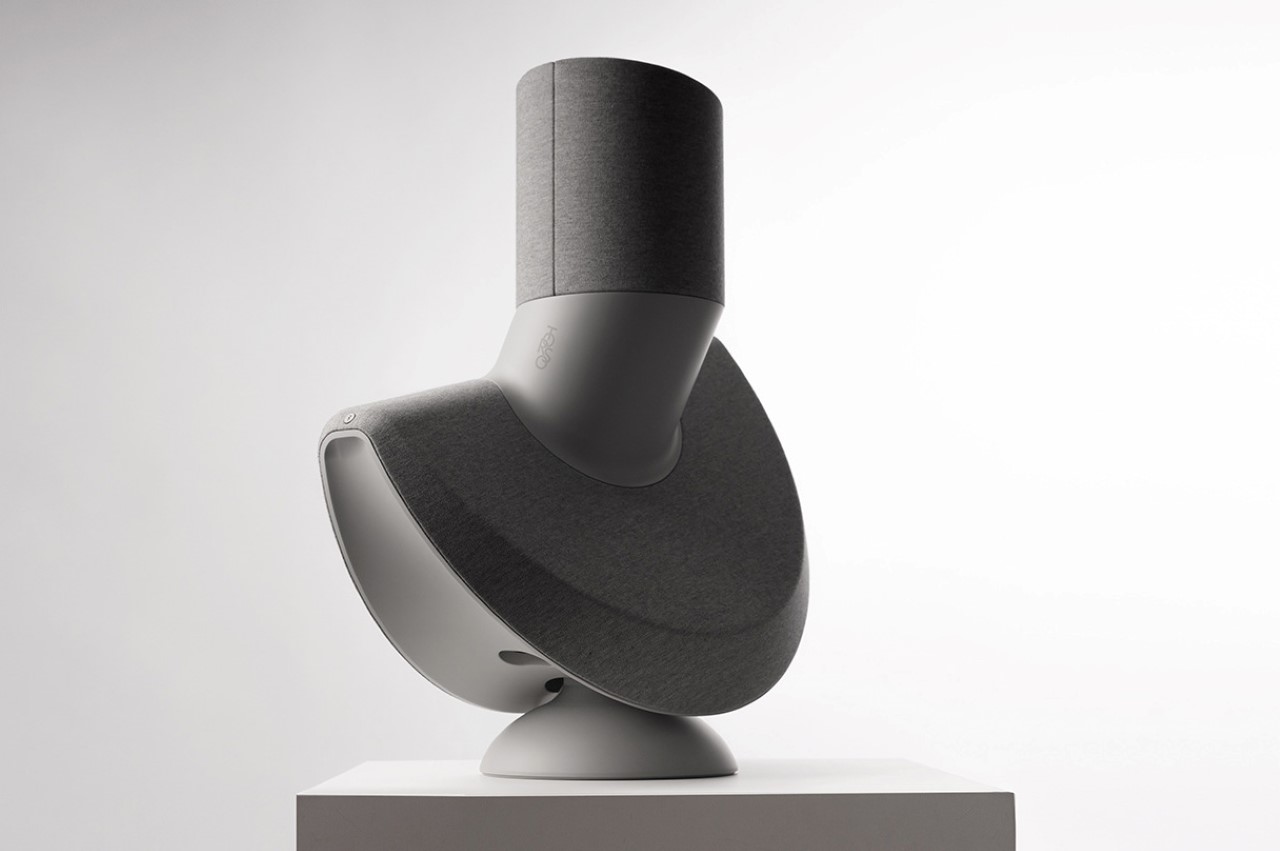
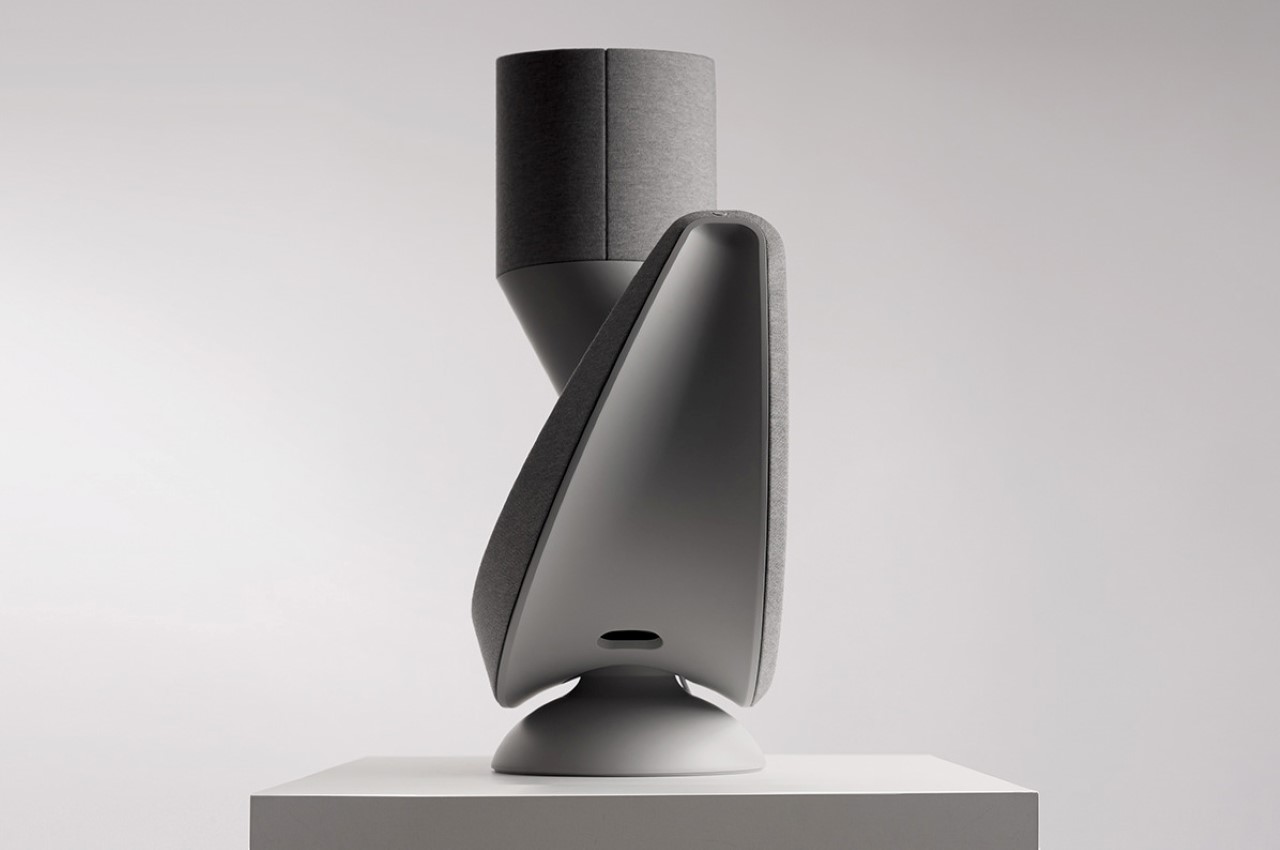
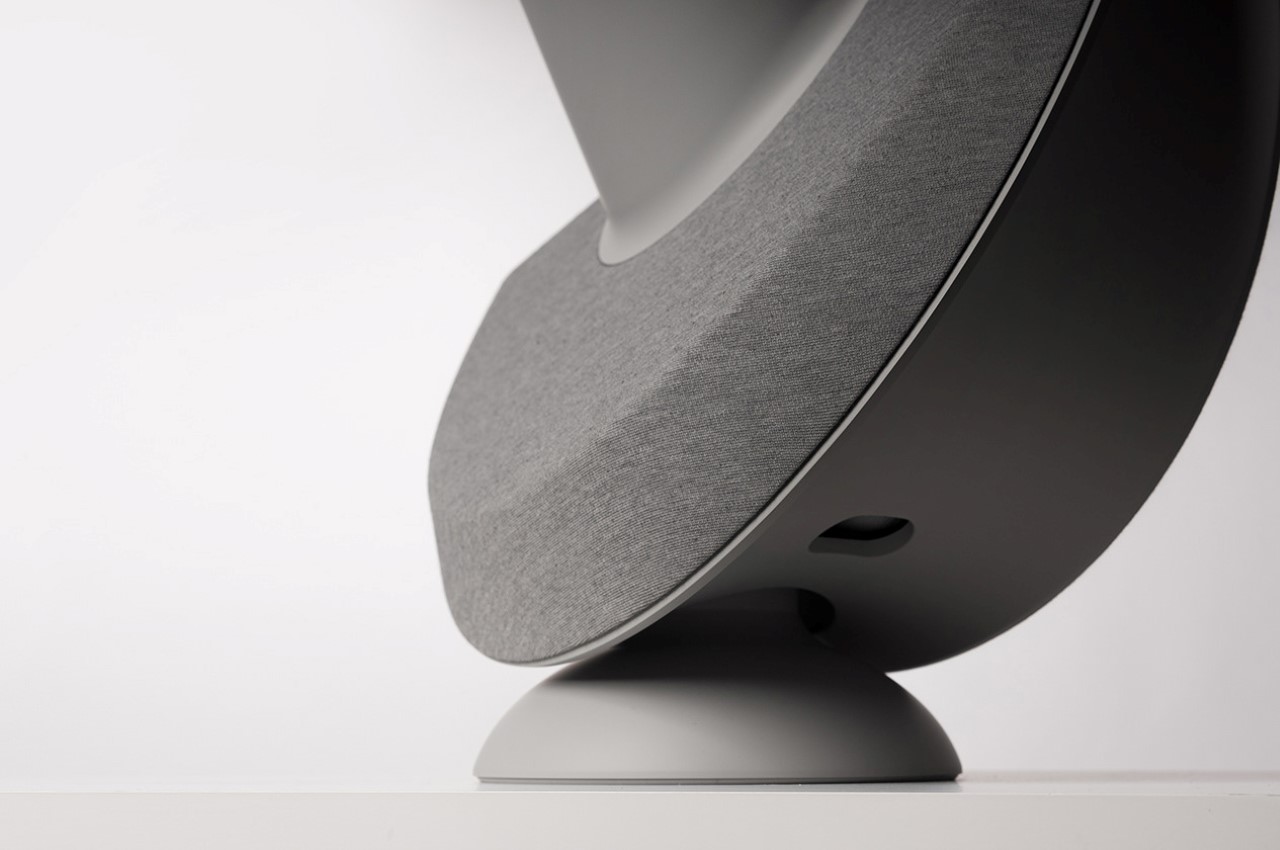
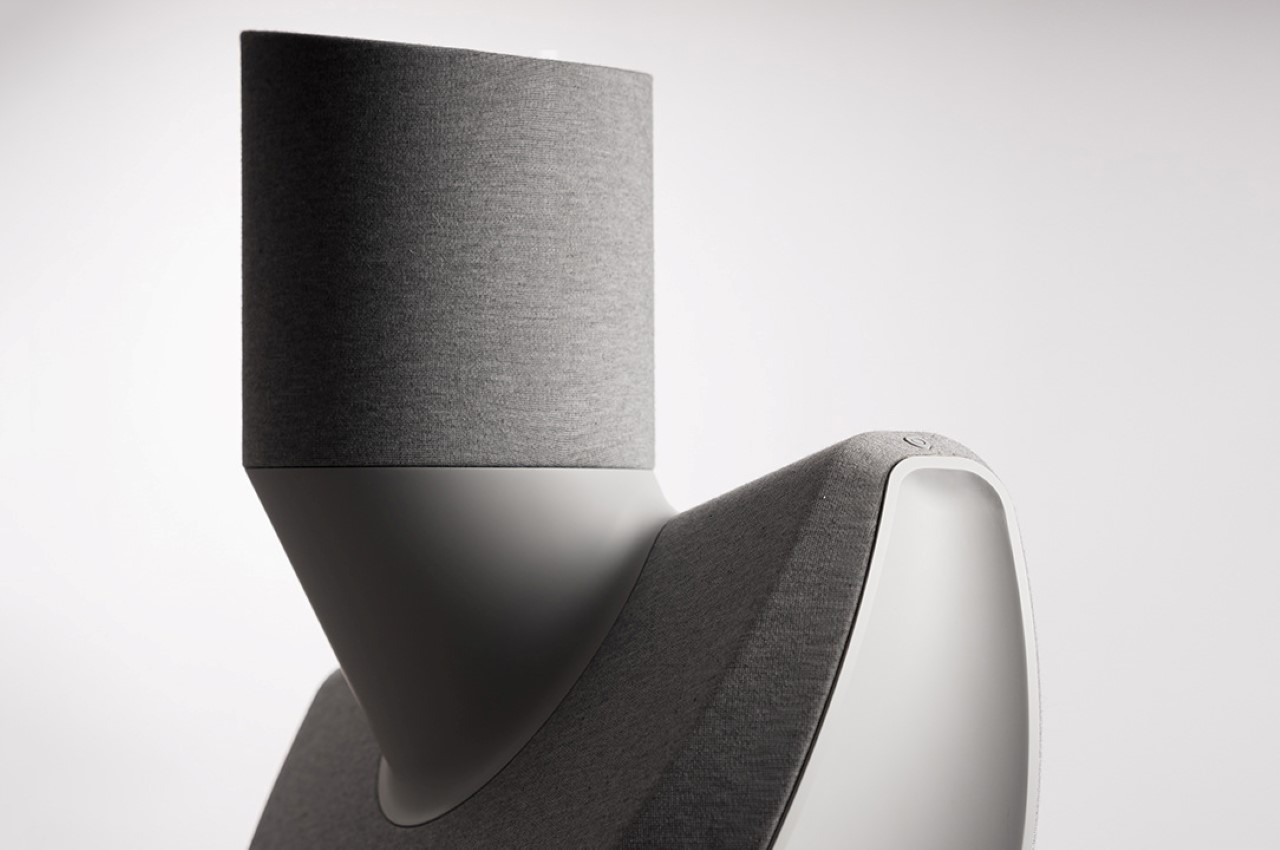
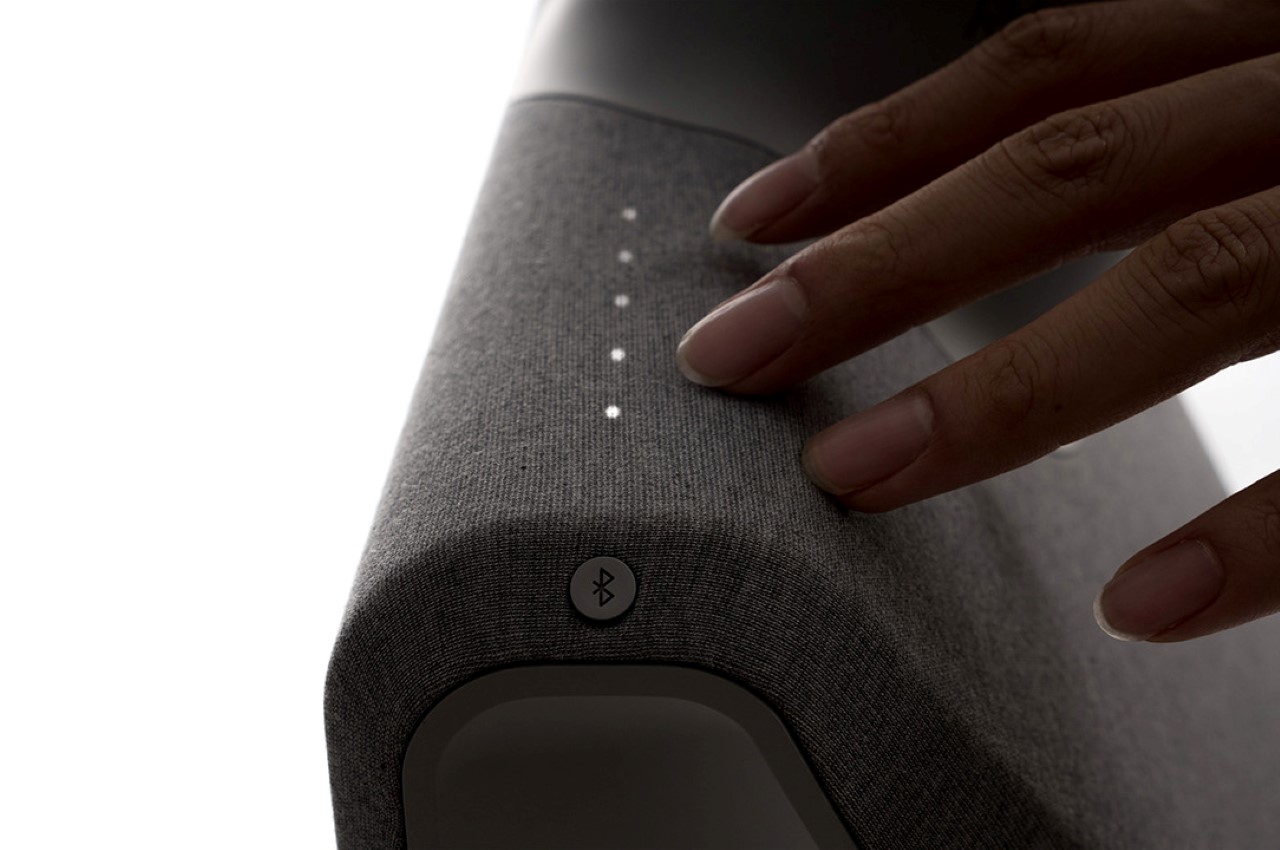
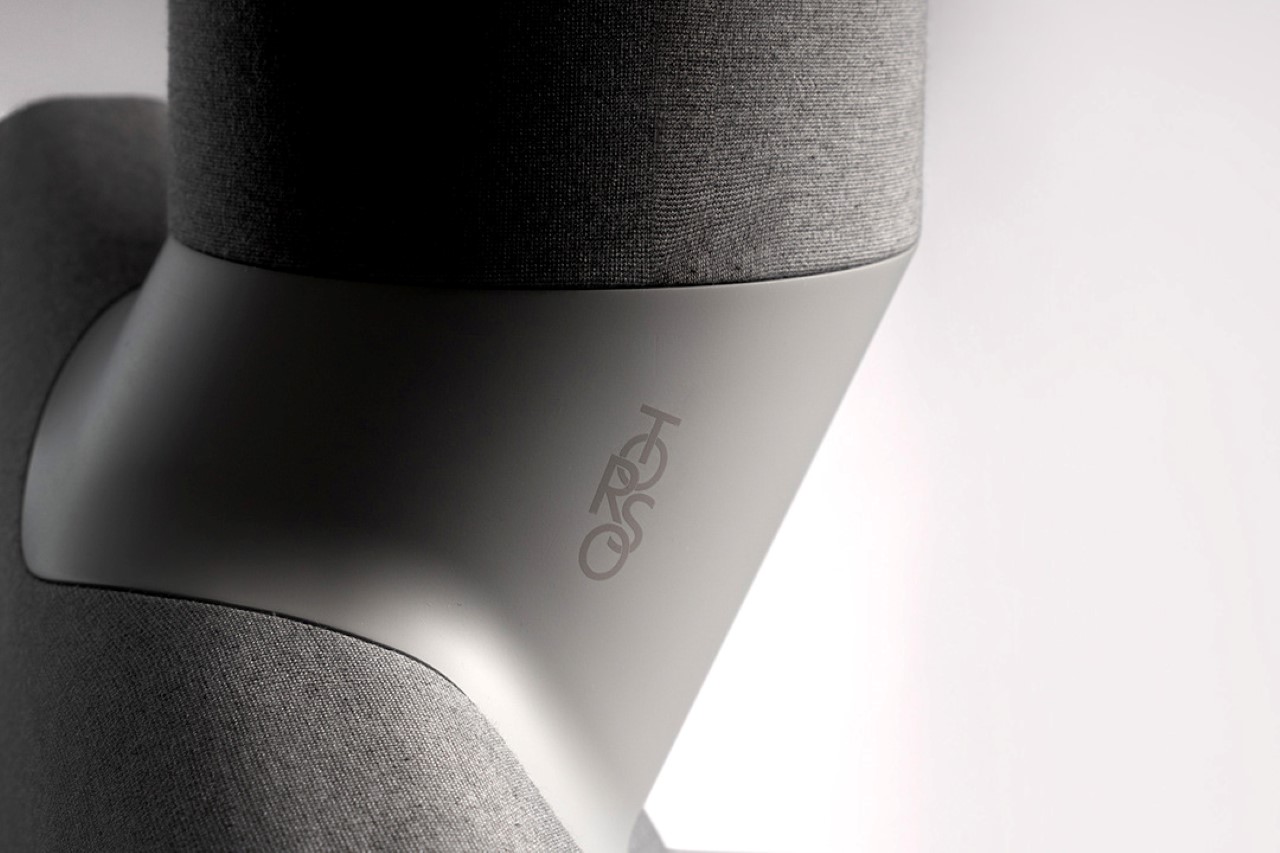
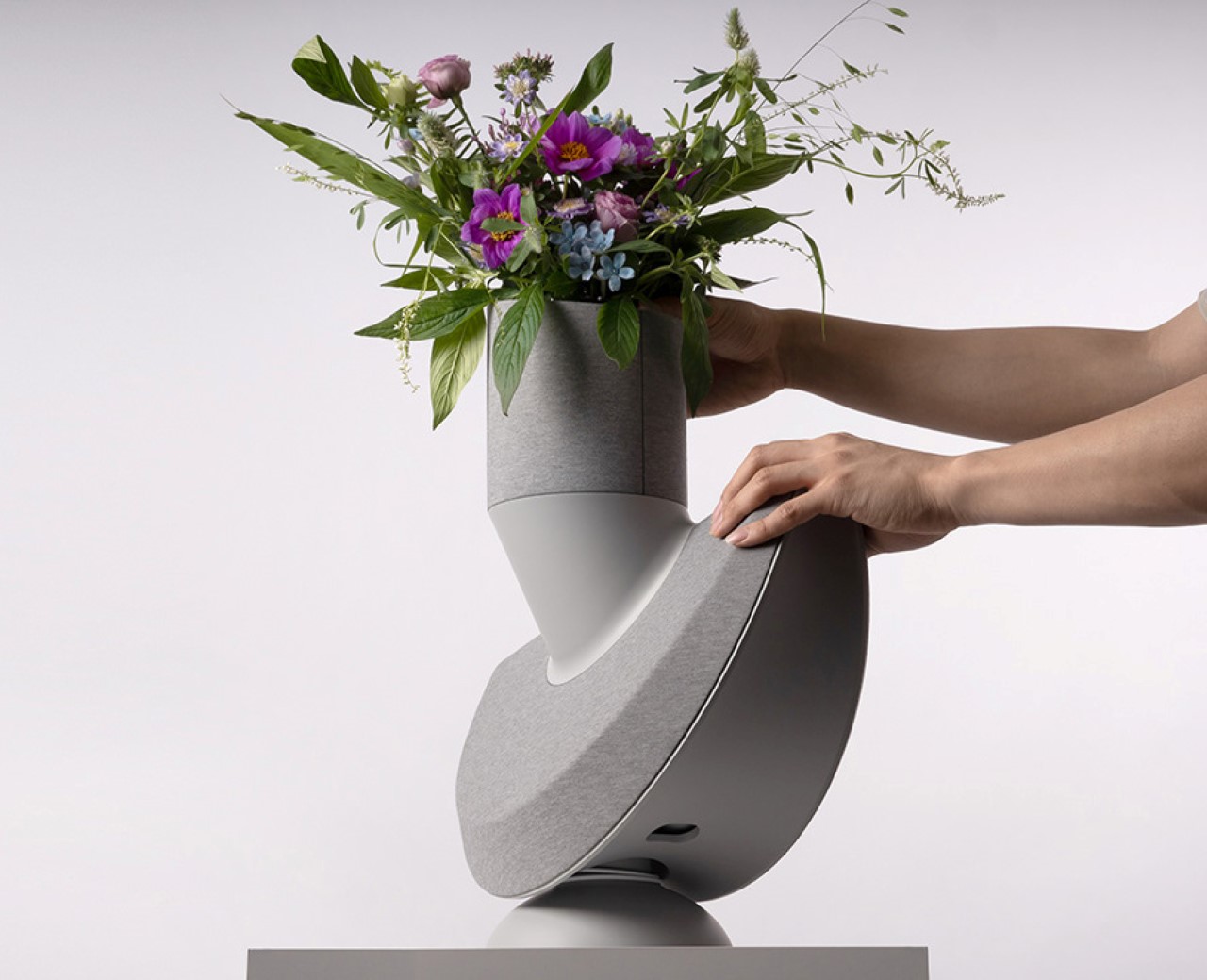
 HEI, the holding company behind a wide number of hotel brands including Marriott and (wait for it) Hyatt, has announced that it suffered a data breach via its payment tools. According to the outfit, hackers installed malware inside payment processing...
HEI, the holding company behind a wide number of hotel brands including Marriott and (wait for it) Hyatt, has announced that it suffered a data breach via its payment tools. According to the outfit, hackers installed malware inside payment processing...